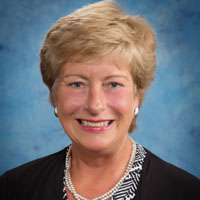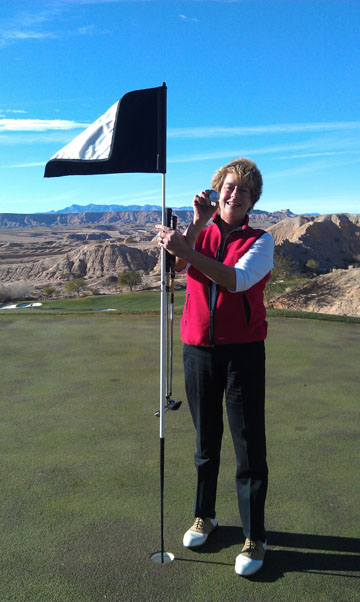Trailblazer

How The Industry’s First Female Multi-Line Rep Sold Her Way To Success
Fresh out of Endicott College after studying broadcast journalism and communications, Dale Johnson Cornell was hired as a secretary in the admissions office at Massachusetts Institute of Technology. It wasn’t a good fit. “It was the biggest joke because I couldn’t sit in my seat,” she says. “I was always getting up and going into the hallway to talk to everyone. I just had more fun meeting people and making friends.” Clearly she was meant to be in sales.
Selling ads for the MIT student newspaper on the side, Johnson Cornell found her calling. But there was just one problem. In the early 1980s, virtually no women were working in the sales field in general.
Fortunately, Johnson Cornell loves a challenge. And at just over six feet tall, she makes a memorable presence, something that “probably didn’t hurt,” she says. After being hired as the first female sales representative by a Boston radio station, she successfully sold broadcast air space for four years before answering an ad in the Boston Globe from Sheaffer Eaton, a division of Textron, looking for a New England area representative for its ad specialty business. “The only reason I answered the ad was that it had the word ‘ad’ in it. I remember thinking to myself, ‘I know Sheaffer Pens and I know Eaton diaries, but what the heck is this ad specialty business?’”
Important Mentors
After interviewing and doing a lot of following up, Johnson Cornell became the first female sales representative hired by Sheaffer Eaton and fell in love with the promotional products business. “I loved the concept of selling a hard good as opposed to air,” she says. While at Sheaffer Eaton, she was mentored by her boss, Koyne Ahlstrand, as well as her fellow reps John Sweeney and Mike Valentini. “Mike trained me. When he left to start his own multi-line rep firm (MVP Promotions), I was devastated.” But Valentini encouraged Johnson Cornell to start her own multi-line rep firm as well, which she did in 1985, establishing Dale B. Johnson Associates. “Mike is still a mentor,” she says.
In addition to Valentini, two other people stand out as being instrumental to her success in the promotional products industry. Maralyn Brink [of distributor Brink Associates] “took me under her wing. I learned so much from her. She was a brilliant, creative distributor and she led me to get involved in our regional association—[then called] the Specialty Advertising Association of New England (SAANE),” Johnson Cornell says.
Jim Moore of Bay State Specialty was also instrumental. “He was the president of the SAANE and here I was, the little kid with curiosity going, ‘can I help?’” That curiosity led Johnson Cornell to become president of SAANE herself, about the time she became an independent rep.
One Of The Guys
As the only female rep in New England, Johnson Cornell was like the little sister. “For me to survive in this industry, I had to become friends with the other 11 to 12 male independent reps in my territory who were already established. There was a good old boys network and I wanted to be part of that. It was a struggle at times and yet I ran equal with them and they respected me.”
The group of independent reps became close. “I so appreciated everything they did for me. They looked after me and I treated them with high regard. Everyone was helpful, kind, full of information and there was lots of sharing and no paranoia.”
Teamwork
Thirty years ago, the Northeast Representatives Association (NERA) decided to host its own trade shows, the first multi-line representative group in the U.S. to do so. “We would pick a hotel, send out invitations using a list from PPAI and invite distributors to come see us and talk about new products. And we still do this today,” Johnson Cornell says.
NERA partnered with regional associations including the Specialty Advertising Association of Greater New York (SAAGNY), the Philadelphia Area Promotional Products Association (PAPPA) and the Chesapeake Promotional Products Association (CPPA) to do a combined show three years ago after realizing there were just too many trade shows.
“It’s four days of shows in four states the last week of January with one big truck and one big bus. Our participating suppliers enjoy the comfort of the bus and the hauling of their displays while travelling from state to state. I’m really proud of NERA because we have hung in there through many industry changes. It’s just been fantastic.”
The shows allow the multi-line reps to develop and strengthen personal relationships—as well as helping distributors gather the information and creative ideas to be able to continue a one-on-one relationship with their clients.
Then And Now
Some things haven’t changed. “You still have to care, work hard, be organized and want to see success for your distributors and suppliers. And I always encourage people to get involved with their regional associations,” she says.
But a lot has changed. Staying in hotels is a breeze today compared to what it was back in the early 1980s. For example, “There were hangers for guys’ pants but no skirt hangers,” she says with a chuckle. Then again, traffic wasn’t as bad and there were fewer distributors to visit. “It’s so much harder today,” she says. “It’s becoming oversaturated.” Hiring an associate (Cheryl Lickteig) has helped tremendously, says Johnson Cornell. And PPAI’s educational opportunities have helped her stay up to date with the many industry changes. She will begin serving on the PPAI Awards & Recognition Committee starting in January 2016.
The most dramatic change, however, is one that she herself helped create: now there are many female multi-line reps.


